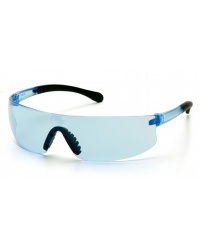Fire Extinguishers-Know Their Differences!

As with all jobs, you need the right tools to get the job done. This also applies to extinguishing a fire.
There are various classes of fires:
- Class A- combustible materials like paper and wood
- Class B- flammable liquids like paint and petrol
- Class C- flammable gases like methane
- Class D- flammable metals like potassium
- Electrical- electrical equipment like computers
- Class F- deep fat fryers
Using the wrong equipment in extinguishing a fire can be detrimental and result in adding more fuel to the fire rather than diminishing the blaze. That’s why knowing the different types of extinguishers and the classes of fires they are suitable for is important, as no one fire extinguisher will cover all classes of fire.
The types of fire extinguishers are:
- Water
- Foam
- Dry Powder
- CO2
Water Extinguishers
This is the most used fire extinguisher for Class A fires and is not suitable for kitchen fires, flammable liquids, gasses, or electrical.
You may be required to have a water extinguisher if your building is constructed out of wood or organic materials, or if those materials can be found on the premises. The extinguisher should be located near the exit or where the fire risk has been identified.
This extinguisher works by giving the fuel a cooling effect, causing it to burn slower until the flames are terminated. In addition to the normal jet nozzle, there are also spray and mist nozzles.
The spray nozzle covers a wider area of flames to accelerate terminating the fire and the mist nozzle releases microscopic water particles to suffocate the fire and creates a wall of mist between the fire and the operator reducing the heat exposure of the individual.
Foam Extinguishers
This type of extinguisher is used mainly for Class B fires but can also be used for Class A as the foam is water-based. It can be used for organic material such as paper, coal, and flammable liquids such as paint and petrol. However, it should not be used for kitchen fires, electrical equipment, or flammable metals.
This extinguisher has a cooling effect on fuel and with flammable liquids, and it creates a barrier between the flame and the fuel to extinguish the fire.
As with a water extinguisher, you may be required to have a foam extinguisher if the building is constructed of wood or organic materials and flammable liquids can be found on the property. These should be located near exits where the Class A or B fire risks have been identified.
Dry Powder Extinguishers
The dry powder extinguisher can tackle Class A, B, and C fires, which is why they are commonly called the ABC extinguisher.
This extinguisher can be used for fires involving organic material such as wood or paper, flammable liquids and gases like liquid petroleum gas (LPG), and some electrical hazards up to 1000v.
These extinguishers should be located between the fire risk and the exit and should be installed in places using flammable gases, such as at welding workstations, and at gas stations.
CO2 Extinguishers
These are used for electrical fires and can also extinguish Class B fires. These should not be used to put out fires involving paper, wood, kitchen fires (especially pan fires), or flammable metals. They are also best suited for sterile locations and rooms housing sensitive equipment. Co2 is a clean gas and leaves no residue, so cleanup is easy.
These extinguishers should be found in places with electrical equipment such as server rooms, electrical panels, laboratories and offices.
Visit Safety Supply Co’s website here: https://safetysupplyco.com/shop/fire-equipment/fire-extinguishers to view our range of fire extinguishers. You can also contact us at 426-4935 to speak to our Service Department about free surveys and recommendations for equipment and servicing your fire equipment.
Recently Viewed Items
Blog Articles
Check out more articles
PPE: The Unspoken Love Language
Wearing PPE: Protecting Your Present and Securing Your Future
View MoreTips to Improve Safety While Working With Heavy-Duty Mobile Equipment
Improving the safety of ground personnel working around mobile equipment, such as forklifts, excavators, etc., requires a combination of engineering controls, administrative measures, and behaviora
View MoreWhy You Should Service Your Safety Equipment
Safety equipment serves as the frontline defense against workplace hazards, ensuring the well-being of employees and minimizing risks.
View More




